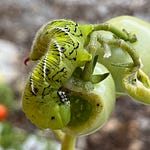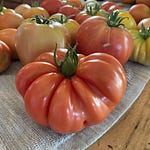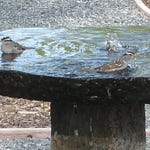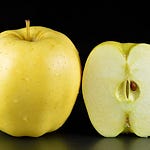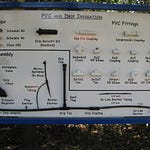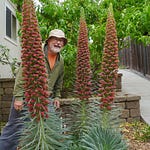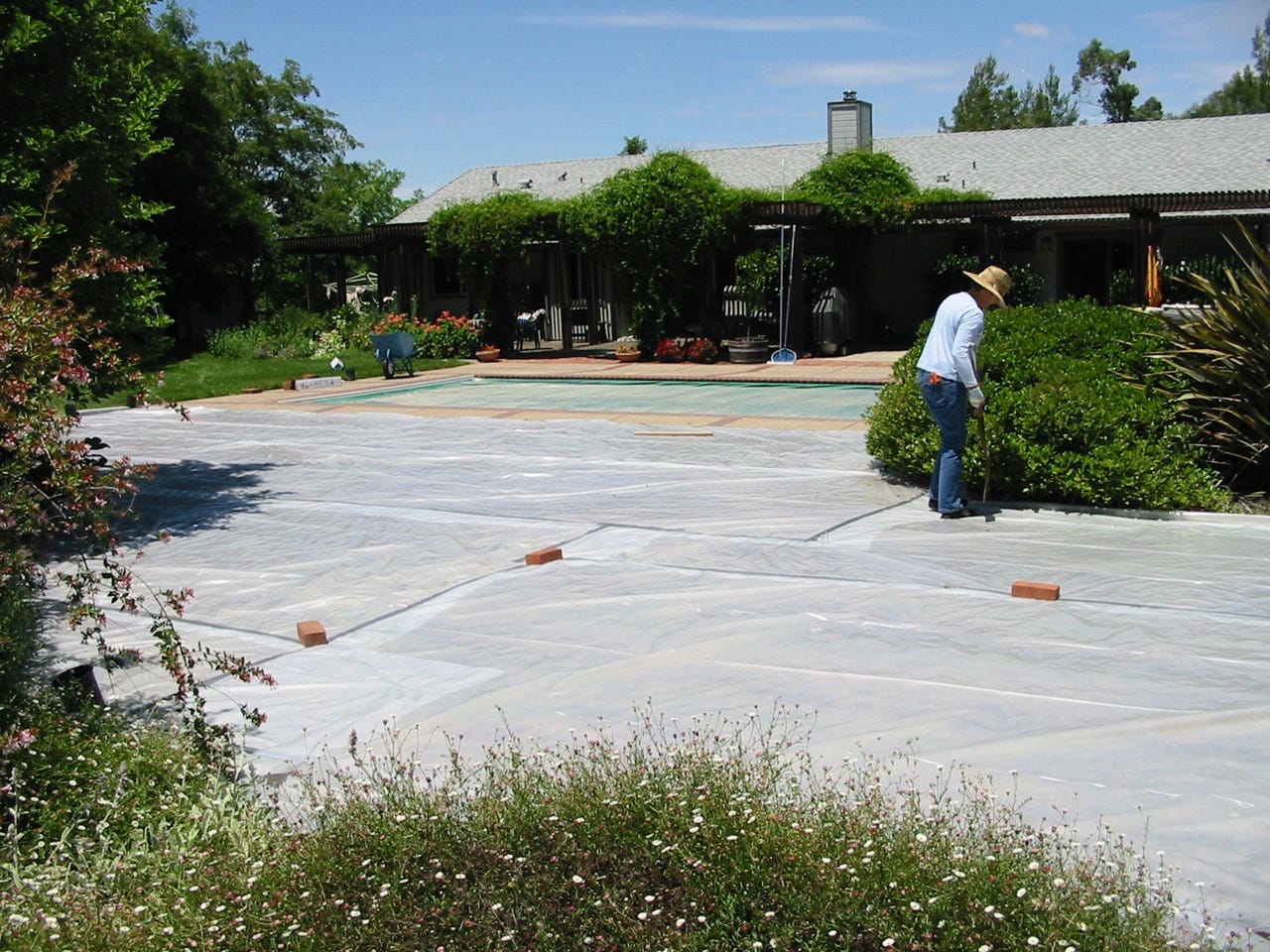
It's a common site this time of year: gardeners with sprayers in hand (or on their back), applying weedkiller to the unwanted greenery that has popped up around their desirable plants.
Winter - USDA Zones 8 and 9 - would seem to be a better time to do this: cool-season weeds are easier to control when they are small and actively growing; around valuable deciduous plants, there is less danger of the spray accidentally hitting the leaves (there aren't any); and, those new, green weeds are like a flashing freeway sign in a drab, brown landscape, screaming "Nyah, Nyah, Nyah!", taunting us into action.
Below are some tips you may not be aware of, when using the most popular post-emergent weed killer, Roundup, as well as it's generic counterparts that also use glyphosate as the active ingredient. (Hint: compare prices!)
The purpose of this posting is not to rail about the dangers to the environment after using glyphosate. Check out the Wikipedia entry for a fairly balanced report on what the scientific community is studying and debating about glyphosate, including this tidbit:
"An in vitro study indicates that glyphosate formulations could harm earthworms and beneficial insects. However, the reported effect of glyphosate on earthworms has been criticized. The results conflict with results from field studies where no effects were noted for the number of nematodes, mites, or springtails after treatment with Roundup at 2 kilograms active ingredient per hectare. Glyphosate can negatively affect nitrogen-fixing bacteria, and increase the susceptibility of plants to disease. A 2005 study concluded that certain amphibians may be at risk from glyphosate use."
Sure, you've read the instructions on how to mix it and how much to apply. And you know not to spray it on desirable foliage. The point here is to make you aware of some of the instructions on the label that you may have overlooked.
Much of this information is taken straight from the 10-page instruction book that comes with Roundup Pro.
Of course, Rule Number One always has been, and always will be:
READ AND FOLLOW ALL LABEL DIRECTIONS.
I know, I know...you started reading the first sentence, and by the time you got to the fourth line, it was all, "blah, blah, blah". But note a couple of items in that paragraph. It doesn't specify to avoid spraying desirable leaves; it says to avoid "desirable vegetation". And sure enough, there are enough thin-skinned trees and shrubs out there through which that wandering mist can attach itself on a windy day.
One of the most susceptible shrubs in the dormant season: your rose bushes. Sure, there are no leaves on them in winter (hopefully), but glyphosate can be absorbed through the thin bark of rose bush trunks, creating problems in the spring and summer for the new growth:
This is what a rose looks like, months after the green stems were hit with errant glyphosate spray. At it isn't just a wintertime weed killer application that could hurt roses down the line. According to the UC Integrated Pest Management Program: "Glyphosate damage may appear at bud break the following spring after a summer or fall application that contacts leaves or stems; symptoms include a proliferation of small, whitish shoots and leaves."
And how many times have you seen gardeners in a hurry, briskly walking down a row of plants, sprayer close to the ground, or spraying while driving their ATV, attempting to decimate a line of weeds at full speed? That increases the chance for spray drift.
To it's credit, that product label repeats itself, in even clearer tones:
Here's one that surprised me:
How many times have you seen someone spraying weeds on a foggy or low overcast day? That's a temperature inversion! Don't spray on a foggy day, because, as the label says: "drift potential is high", due to the droplets remaining suspended in a concentrated cloud.
Hmm, I guess you might be inhaling some of that on a foggy day...possibly?
How about all those days when you see someone spraying a post-emergent weed killer on plants that are past their prime, already half-dead or totally dead? You're wasting your time and money, according to the label:
Many gardeners know about using glyphosate as a stump killer of an unwanted woody tree or shrub. Make the cut, then immediately apply the glyphosate at a high rate of concentration. But wait a minute...what's going on underground? Possible intermingling of the roots of different plants.
The good news here: plants of different genera (a eucalyptus and pistache, for example) tend not to graft their roots together. But if you are trying to get rid of one willow stump while saving another healthy, desirable willow nearby… well, you've been warned.
The US Dept of Agriculture also offers advice on paying attention to other meteorological conditions when applying glyphosate:
• Use when ambient air temperature is between 60 - 85 degrees F. (plants slow down their growth when it's too hot or too cold; glyphosate works best on actively growing plants).
• Do not use if rain is expected, or if foliage is wet.
• Do not water treated areas for at least 6 hours after treatment.
• Allow seven days for the plant to die. In cool, dark or dry climates the effects of treatment may take longer than a week because plant growth rates are slowed and the chemical requires more time to act and the plant to die.
• Do not use in windy conditions or on water.
And, the USDA Forest Service suggests precautions when storing weed killers: “Minimum storage temperature refers to the temperature required to keep the pesticide in solution. Below that temperature, the pesticide will form crystals and freeze.” According to that publication, different weed killers have different minimum storage temperatures; glyphosate needs protection at temperatures less than 10 degrees fahrenheit.
Again, your better chemical defense against weeds is to read and follow all label directions when applying any weed killer. Your best defense? A hoe, when you first spot a young weed. Or, for mature weeds…goats.
Thank you for listening to the Garden Basics with Farmer Fred podcast! It’s available wherever you get your podcasts. Please share it with your garden friends.
As an Amazon Associate, I earn from qualifying purchases from some of the underlined links in the newsletter. This is how I am trying to keep this a free newsletter. And as long as you buy whatever you want from Amazon using any of those links to get into the Amazon site, I get a few pennies. Thank you.
Thanks for Subscribing and Spreading the Word About the “Beyond the Basics: The Garden Basics with Farmer Fred'“ newsletter, I appreciate your support.
Fred Hoffman is also a University of California Cooperative Extension Master Gardener in Sacramento County.













